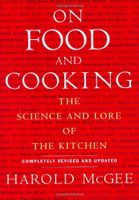Advertisement
Preindustrial Sugar Refining
By Harold McGee
Published 2004
- clarifying the cane juice
- boiling it down into a thick syrup to concentrate and crystallize the sucrose
- draining the impurity-laden syrup from the solid crystals
- washing the remaining syrup from the crystals
The cane stalks were first crushed and pressed, and the resulting juice was cleared of many organic impurities by heating it with lime and a substance such as egg white or animal blood, which would coagulate and trap the coarse impurities in a scum that could be skimmed off. The remaining liquid was then boiled down in a series of shallow pans until it had lost nearly all of its water, and poured into cone-shaped clay molds a foot or two long with a capacity of 5 to 30 lb/2–14 kg. There it was cooled, stirred, and allowed to crystallize into “raw sugar,” a dense mass of sucrose crystals coated with a thin layer of syrup containing other sugars, minerals, and various dissolved impurities. The clay cones were left to stand inverted for a few days, during which time the syrup film, or molasses, would run off through a small hole in the tip. In the final phase, a fine wet clay was packed over the wide end of the cone, and its moisture was allowed to percolate through the solid block of sugar crystals for eight to ten days. This washing, which could be repeated several times, would remove most of the remaining molasses, though the resulting sugar was generally yellowish.


